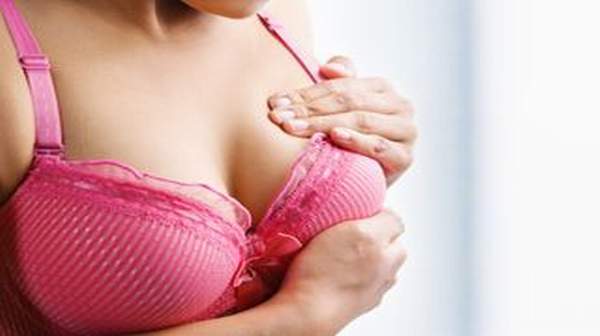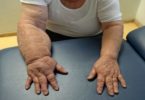What's in this article?
What are Fibrocystic Breasts?
Fibrocystic breasts are characterized by lumpiness and usually discomfort in one or both breasts. The lumpiness is due to small breast masses or breast cysts. The condition is very common and benign, meaning that fibrocystic breasts are not malignant (cancerous). Fibrocystic breast disease (FBD), now referred to as fibrocystic changes or fibrocystic breast condition, is the most common cause of “lumpy breasts” in women and affects more than 60% of women. The condition primarily affects women between the ages of 30 and 50, and tends to become less of a problem after menopause.
Symptoms of Fibrocystic Breasts
Signs and symptoms of fibrocystic breasts may include:
- Breast lumps or areas of thickening that tend to blend into the surrounding breast tissue
- Generalized breast pain or tenderness
- Fluctuating size of breast lumps
- Green or dark brown nonbloody nipple discharge that tends to leak without pressure or squeezing
- Changes that occur in both breasts, rather than just one
- Monthly increase in breast pain or lumpiness from midcycle (ovulation) to just before your period
Fibrocystic breast changes occur most often in women in their 20s to 50s. Rarely do postmenopausal women experience fibrocystic breast changes, unless they’re on hormone therapy.
Causes of Fibrocystic Breasts
The exact cause of the condition is not known. Hormones made in the ovaries may make a woman’s breasts feel swollen, lumpy, or painful before or during menstruation each month.
Up to half of women have this problem at some time during their life. It is most common between the ages of 20 and 45. It is rare in women after menopause, unless they are taking estrogen.
Who Gets Fibrocystic Breast Disease?
Any woman can get fibrocystic breast disease. It is most common in women who are in their thirties to fifties.
Birth control pills may reduce your symptoms, while hormone therapy may increase your symptoms. Symptoms typically iTypes and Causes of Fibrocystic Breast Changes
Most fibrocystic breast changes are the result of monthly hormonal changes and are nothing to be concerned about. However, some may suggest a slightly increased risk of cancer. These may require other tests to confirm a diagnosis.mprove after menopause.
Types of fibrocystic breast changes are:
- Fibrosis. This is fibrous tissue similar to scar tissue. It feels rubbery, firm, or hard to the touch. It does not increase the risk for cancer.
- Cysts. These are fluid-filled sacs. Microscopic cysts are too small to feel. These may get bigger and form macrocysts, which may be 1 to 2 inches across; at this size you can feel them.
Cysts may enlarge and become tender right before your period. They tend to be round and movable. But it may be hard to tell the difference between a cyst and a solid mass. So you may need other tests to confirm a diagnosis.
How Are Fibrocystic Breasts Diagnosed?
Fibrocystic breasts are often first noticed by the woman, and further investigated by her physician. Breast tenderness, pain, and/or lumpiness are common indicators of fibrocystic breasts, especially when they coincide with menstruation. Often, fibrocystic breasts will be diagnosed with a physician-performed clinical breast exam alone.
While having fibrocystic breasts is usually not a risk factor for breast cancer, the condition can sometimes make breast cancer more difficult to detect. Therefore, in some cases, breast imaging exams, such as mammography or ultrasound, will need to be performed on women who show symptoms of fibrocystic breasts. However, screening mammography may be more difficult to perform on women with fibrocystic breasts because the breast density associated with fibrocystic breasts may eclipse breast cancer on the mammogram film. In some cases, additional mammography or ultrasound imaging, followed by fine needle aspiration or biopsy, will be performed on women with fibrocystic breasts to determine whether breast cancer is present. Fine needle aspiration (to drain large, painful cysts) may also be performed by a physician help relieve some of the more severe symptoms of fibrocystic breast condition.
Fibrocystic Breast Treatment
If there is only one lump or if one lump appears to be different from other lumps, the lump may be removed.
No specific treatment is available or required for fibrocystic changes, but certain measures may help relieve symptoms:
- Wearing a soft, supportive bra, such as an athletic bra
- Taking pain relievers such as acetaminophen
Sometimes cysts are drained, but they may recur (see Breast Cysts).
If symptoms are severe, doctors may prescribe drugs, such as danazol (a synthetic male hormone) or tamoxifen (which blocks the effects of estrogen ). Because side effects can occur with long-term use, the drugs are usually given for only a short time. Tamoxifen has fewer side effects than danazol.






